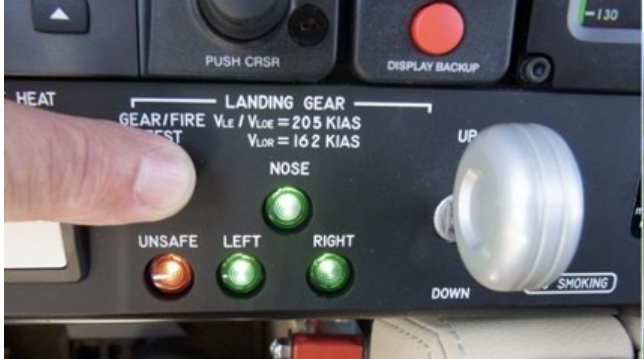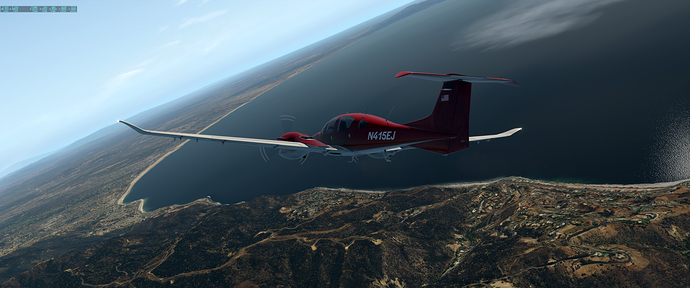So I thought I’d show a little bit about how technology has improved situational awareness and safety in general aviation in the past 10 years. All of these images are from a simulated flight between Las Vegas (KLAS) and Los Angeles (KLAX) that I made this afternoon. The first image shows what my “flight deck” looks like for a typical flight. Over on the left, my iPad is running ForeFlight and is showing my planned route overlaid on a VFR sectional chart. In the center are the Garmin G1000 Primary Flight Display showing the flight instruments and the Multifunction Display showing navigation information. On the far right is my StreamDeck which lets me press buttons to do stuff like raise and lower the flaps and landing gear so I don’t have to try to remember key commands.
The view above is from a few miles out of Las Vegas, just after reaching my cruising altitude of 10,500 ft MSL.
With about 30 minutes to go, there’s one last mountain range to cross, and it includes the highest point on my route. Even though I planned my cruise altitude to clear the peaks by over 1000 ft, they look a little concerning from here. How to be sure I’m going to be okay?
For one thing, I have terrain alerting turned on on the G1000, and the MFD (the right screen) isn’t showing any warnings, which is reassuring by itself. But I can also use ForeFlight to cross check and get even more information about what’s ahead:
Here, I’ve activated ForeFlight’s “synthetic vision” feature, which gives me a virtual 3D view of the terrain around me. If the terrain is green, there are no hazards at or near my current altitude. Straight ahead looks fine, though there’s one tall peak (shown in yellow) that could be a problem were I to deviate to the left of my course.
ForeFlight can also display a vertical profile of my flight that updates in real time, and that’s what is shown above. As planned, I’ll clear any terrain on my route by 1400 ft. So, time to enjoy the views!
Hope you enjoyed the flight! 
Important note
If this were a REAL flight, I’d have planned to cross those mountains at a much higher altitude, because an engine failure in the mountains could quickly turn into a catastrophe, even in a twin engine aircraft.
Although all twins are theoretically able to climb with one engine inoperative, there are many circumstances where you might not be able to do so and in fact, actually lose altitude even with the remaining engine at full power. Pilots often remark that that the good thing about engine failures in a twin is that the remaining engine will always get you to the scene of the crash.
With more altitude, I’d have more options for places to land as well as more time to troubleshoot the failed engine and possibly get it restarted.
 ) The upgraded scenery doesn’t affect frame rate, but it sure does consume disk space! (Over 400 GB for just California and the Mid-Atlantic states!!!)
) The upgraded scenery doesn’t affect frame rate, but it sure does consume disk space! (Over 400 GB for just California and the Mid-Atlantic states!!!)
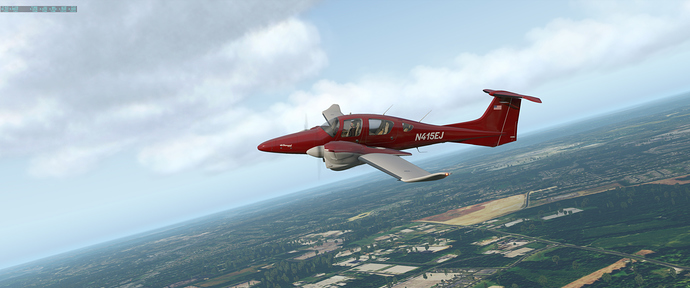

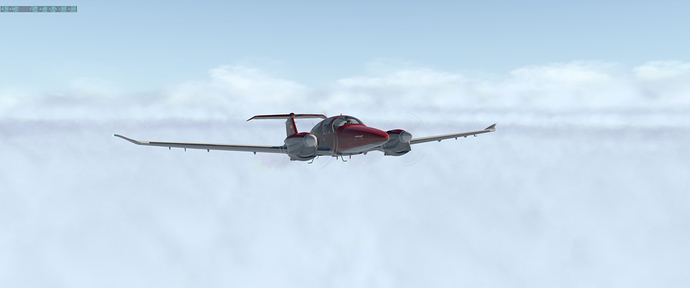













 The
The 



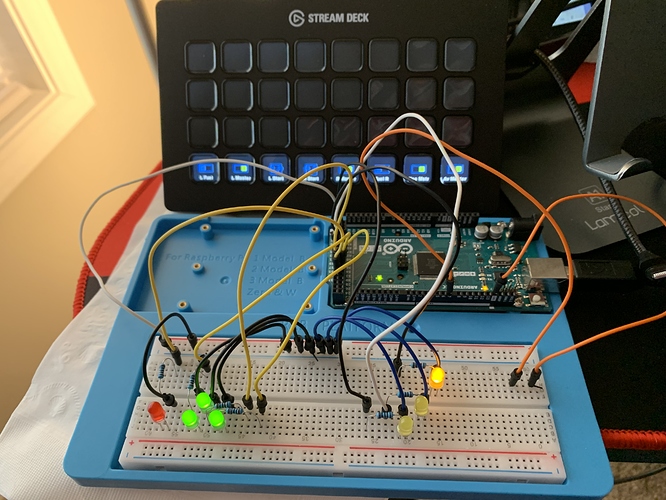
 )
)